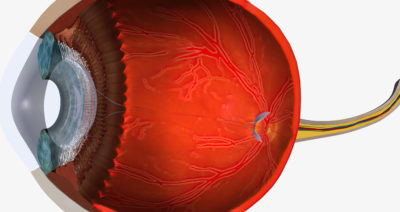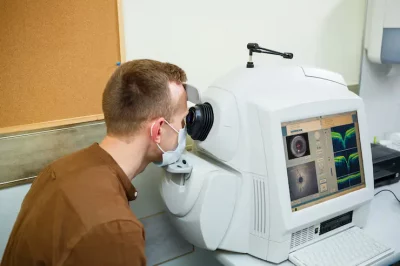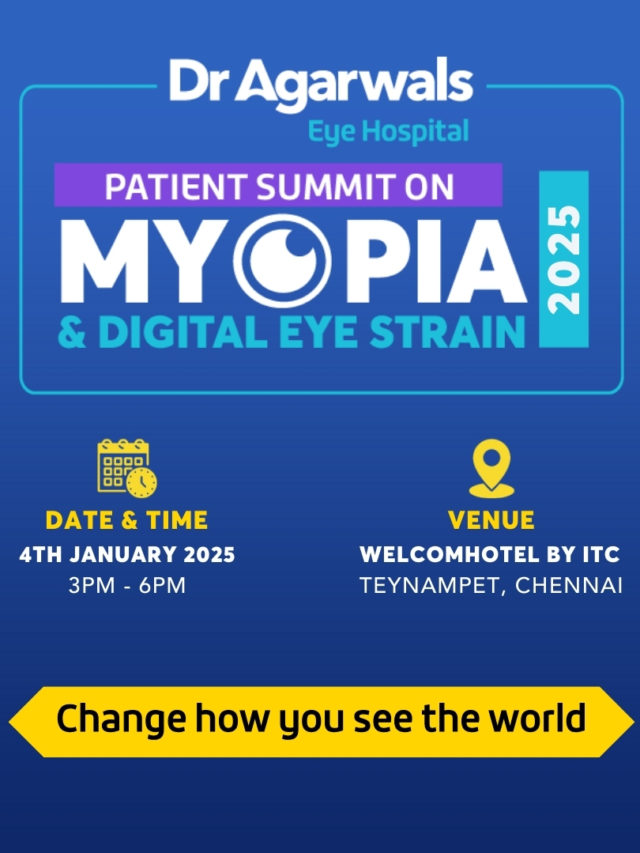The barrage laser procedure is an advanced ophthalmic treatment designed to create a barrier of laser burns on the retina to prevent the progression of certain eye diseases. It is often recommended in cases where there is a retinal thinning, retinal hole, retinal tear or conditions in retina which can lead if untreated to retinal complications, including development of retinal detachment.
This minimally invasive barrage laser treatment can protect vision by providing barrier around the weak or damaged areas of the retina. Understanding its uses, procedure, and precautions after the barrage laser is crucial for ensuring optimal outcomes and faster recovery.
What is a Barrage Laser?
Barrage laser is a type of laser eye surgery used to apply controlled laser burns to the retina, creating a scar that acts as a physical barrier. This prevents the spread of fluid or retinal tears that could lead to retinal detachment.
It is often performed in an outpatient setting and can be completed within a short time depending on size of original lesion,depending on the patient’s condition and the complexity of the case.
Conditions of Barrage Laser Surgery
Retinal Tear or Hole
A retinal hole occurs when the retinal tissue thins or develops an opening, which can cause fluid to leak under the retina. The barrage laser treatment seals around the hole, preventing further tearing or retinal detachment.
Lattice Degeneration (Weak or Thin Retina)
In lattice degeneration, parts of the retina become thin and weak, making them more prone to tears. Applying a barrage laser around the weak areas strengthens the retina and reduces the likelihood of severe damage.
Risk of Retinal Detachment
If there are signs of possible retinal detachment, a retinal barrage laser can create a secure barrier to prevent the detachment from occurring or progressing, thus protecting vision.
Floaters and Flashes
When floaters and flashes are caused by retinal thinning or minor tears, the barrage laser can prevent worsening of the condition and protect against further retinal injury.
What to Expect During Barrage Laser Surgery
Step 1: Dilation of Pupils
Before the procedure, eye drops are used to dilate the pupils. This allows the ophthalmologist to see the retina clearly and identify the exact areas requiring barrage laser treatment.
Step 2: Anaesthetic Drops in the Eyes
Local anaesthetic drops are applied to numb the eyes and ensure the patient feels minimal discomfort during the retinal barrage laser procedure.
Step 3: Laser Application
Using a specialised laser, the ophthalmologist applies focused laser burns around the damaged retinal area. This step is crucial for sealing the tear and preventing retinal detachment.
Step 4: Recovery Period
Immediately after the barrage laser, patients may notice blurry vision or mild discomfort. The recovery time for the barrage laser varies. Most patients resume normal activities within a few days, provided they follow all precautions after the procedure.
Post-Surgery Care After Barrage Laser Surgery
Avoiding Strenuous Physical Activities
Heavy exercise, bending, or lifting should be avoided for one or maximum two weeks after the barrage laser to prevent pressure changes that could affect healing.
No Eye Rubbing or Pressure
Patients should avoid rubbing their eyes unnecessarily and vigorously
Using Prescribed Eye Drops
Eye drops help reduce inflammation and prevent infection. Following the prescription schedule is one of the most important precautions after a barrage laser.
Risks and Side Effects of Barrage Laser Surgery
Temporary Vision Changes
It is common to experience temporary blurred vision, mild light sensitivity, or seeing floaters after a barrage laser.
Infection or Inflammation
Though rare, infections or inflammation can occur. Prompt medical care ensures these barrage laser side effects are managed effectively.
Potential for Retinal Damage (in rare cases)
Even if performed precisely, there is a minimal risk of progression of retinal tears of retinal detachment occurring in the following days as the disease progresses naturally. , though this is rare and floater increase or flashes or drop in vision needs immediate review with treating ophthalmologist .
Cost of Barrage Laser Surgery
The cost of barrage laser treatment varies depending on the hospital, city, and the patient’s condition. It is generally less expensive compared to more invasive retinal surgeries, but additional costs may apply for follow-up visits and post-procedure medications.
When to Seek Professional Help After Barrage Laser Surgery
Seek immediate medical attention if you notice severe pain, sudden vision loss, increased floaters, or flashes of light after barrage laser surgery. Early intervention helps prevent complications like retinal detachment or infections, ensuring the best possible vision outcomes.









